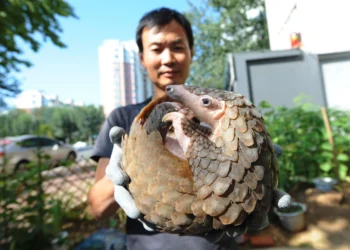Numerous studies are showing the effects of air pollution on human health. But what about our furry friends?
Granted, pets are at as much risk as humans when it comes to pollution. Long and short term exposure to air toxins can lead to respiratory and cardiovascular issues, cancer, skin diseases, and eye irritation to both humans and animals.
Years back, American coal miners used caged mice as methane and carbon monoxide detection systems. If the mice started showing signs of distress, poor health, and death, it was a clear indication of a human hazard so the miners would evacuate.
You May Like: Boy Cat Names: Find the Perfect Male Kitten Name
This tells you that pets are more vulnerable to pollutants than humans. The fact that pets spend most of their time indoors near the contaminants could also be a cause for this epidemic.
Where does air pollution come from?
The World Health Organization outlines six major air pollutants; ground-level ozone, carbon monoxide, sulfur oxide, nitrogen oxide, lead, and particle pollution. In layman’s terms, air pollution comes from;
- Fumes from vehicles, power plants and construction
- Burning coal
- Smoke from cigarettes and wood-burning stoves/fireplaces
- Insecticides, fungicides, and herbicides
- Chemicals from cleaning products
Recent Studies
Studies show that pets living with cigarette smokers or in houses where they burn wood have a higher health risk than the humans living there. This is because pets spend most of their time on the floor where smoke concentration is higher and inhale second-hand smoke from the owner’s clothes. Cats exposed to prolonged cigarette smoke show reduced lung function.
Another study has linked cleaning products to carcinogens that cause bladder, lung, and nasal cancer in dogs. If you thought birds were safe because they spend most of their time in the open air, you were wrong. Ozone, fumes, and acid rain have continued to affect birds on every side, leading to lung failure, reduced body size, and inflammation.
You May Like: 500 Racehorse and Horse Names
When it comes to outdoor air pollution, scientists examined the brains of dogs exposed to Mexico city’s heavily polluted air and compared them to those of dogs that live in less polluted cities. According to the report, the dogs in Mexico showed increased inflammation, amyloid plaques, and neurofibrillary tangles associated with Alzheimer’s disease in humans.
The University of Massachusetts also carried out a study on the effects of pesticides on dogs. The result from the 700 dogs study showed that a third of the dogs had malignant lymphoma.
Essential Oils as a Health Hazard
Essential oils are now part and parcel of every home. Everyone is adding a few drops of these natural oils in diffusers and warmers to make the house smell and feel good. Unfortunately, some pets- namely cats and birds are quite sensitive to essential oils.
For instance, tea tree oil, which is very popular in homes, has a toxic element that is not quickly metabolized by cats and other small pets. Apart from the exposure that comes from using diffusers to release the oils, cats can also get poisoned if you use essential oils to groom a dog.
How to Reduce Pets’ Exposure to Air Pollution
Air the house every day
The number one thing you should do to keep the house clean and fresh every day is to open the windows. This allows all the pent up carbon monoxide in the home to leave and clean oxygen to get it. Airing the house and letting some sun come in also prevents the development of different mold and mildew.
You can also improve this exchange of gases by having live plants inside the house to suck most of the harmful emissions. Plants with flowers will also make the house smell good, so you don’t have to use artificial air sprays.
Change air filters often
Cleaning and changing your air filter ensures your A/C is blowing clean air around the house. The air filter holds onto dust particles and any debris, so when it blocks, the A/C will be circulating dirty air. While at it, you can also buy a good air purifier to freshen the air inside your house.
Vacuum frequently
Since pets spend a lot of time on the floor and carpets, vacuum and dust the floors at least once a day to remove hairs and dust. You should also vacuum the chairs and the pet sleeping area to ensure the entire house is free of dust mites and fur.
Avoid smoking indoors or near pets
Second-hand smoke causes respiratory issues to pets. You can protect them by smoking outside the house and changing your clothes before holding the pet. If you use firewood in the fireplace, make sure the chimney works perfectly in directing the smoke out of the house.
Use chemical-free cleaning products
Phthalates, Perchloroethylene, Triclosan, Quarternary Ammonium Compounds, 2-Butoxyethanol, Ammonia, Chlorine, and Sodium Hydroxide. These are some of the toxic compounds found in your day to day cleaning products. While these toxins will eventually affect humans, pets are at more risk because they lie on the carpet and the floor all day, inhaling and ingesting them.
If you can’t find natural cleaning supplies at the store, you can always use vinegar and baking soda.
Use chemical-free products in the yard
Pets in rural areas are more prone to respiratory diseases and cancer because of the exposure to insecticides and herbicides. Make sure you only use chemical-free products in your yard to keep critters away or clean.
Take pets to less polluted places
Under normal circumstances, people take their pets to the nearest park or take a jog along the area. Unfortunately, these places are also close to factories and roads where cars are emitting fumes. Choose areas that are a bit far from the road or industries to reduce the effects of air pollution.
While you can’t stop air pollution on your own, you can always ensure the air quality in your home is clean. Making a conscious effort to use chemical-free products, banning any form of smoke in the house, and keeping the HVAC unit clean are all good places to start. After all, you can only save one life at a time.









